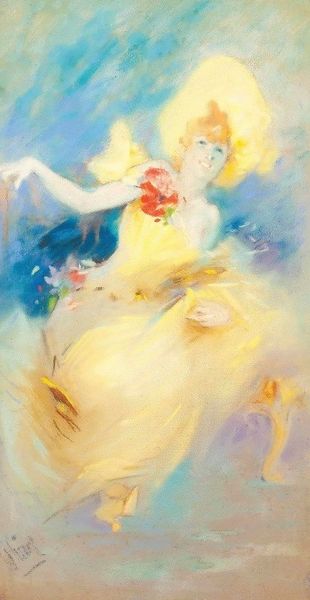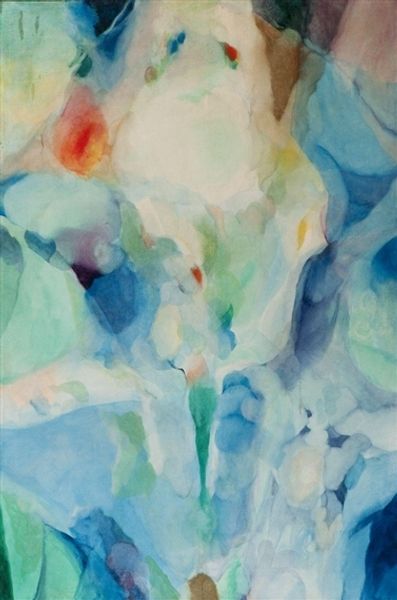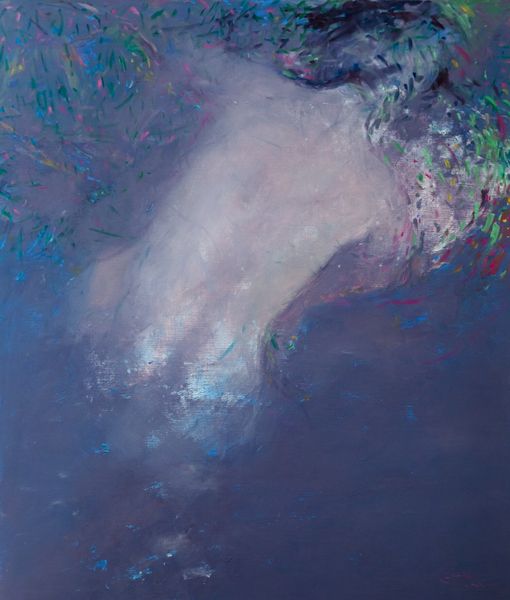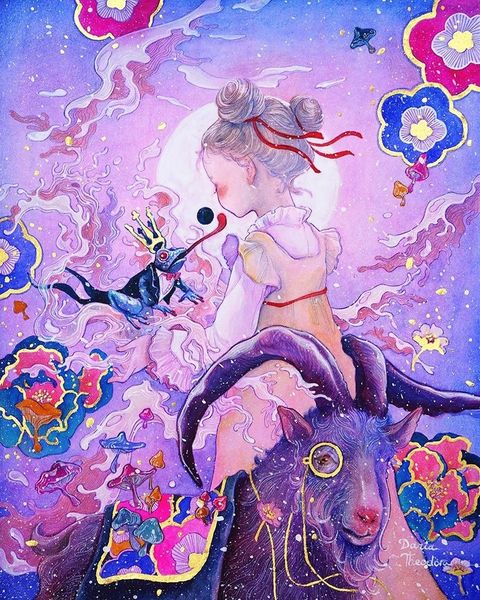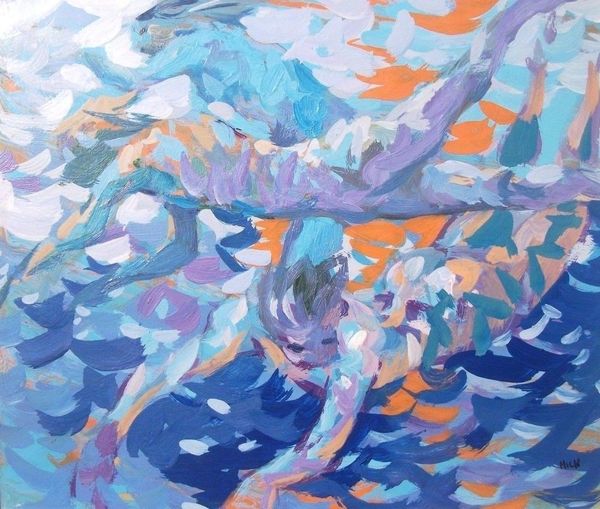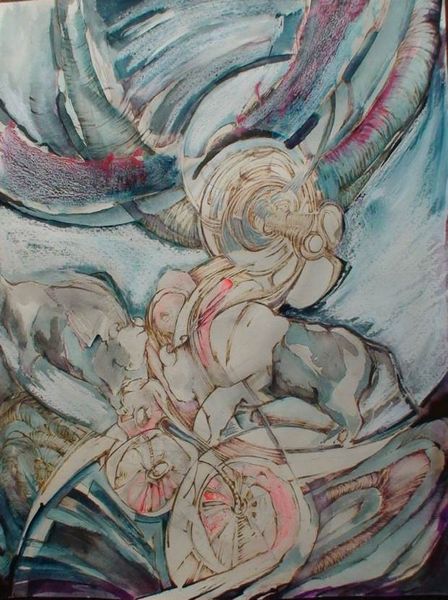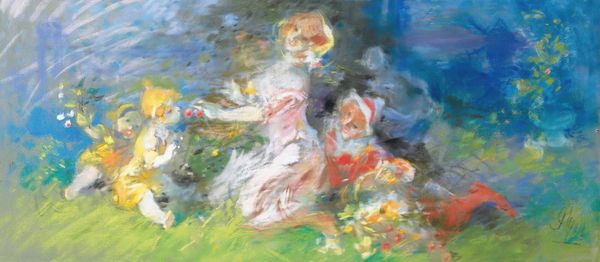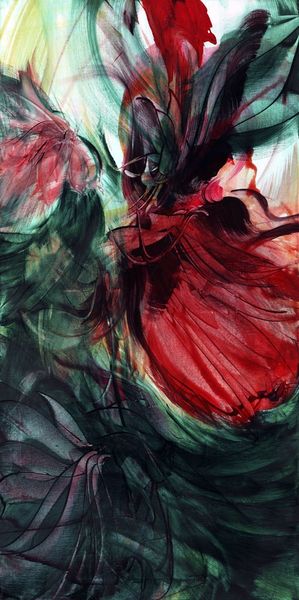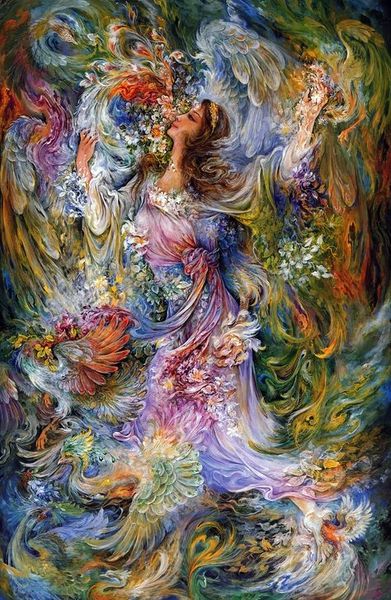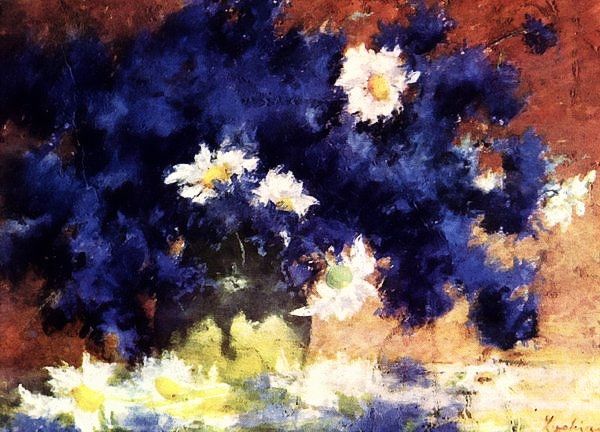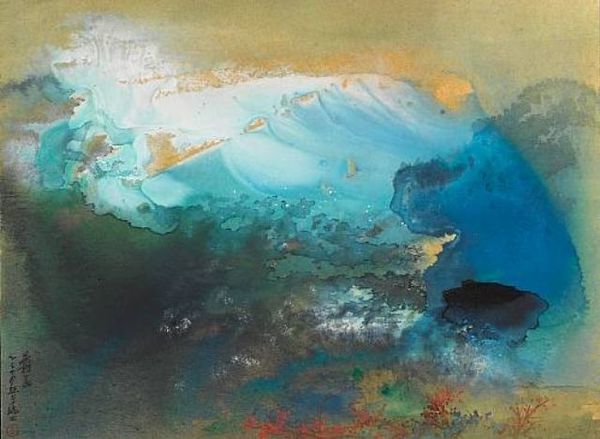
painting, oil-paint
#
portrait
#
painting
#
impressionism
#
impressionist painting style
#
oil-paint
#
figuration
#
oil painting
#
romanticism
Copyright: Public Domain: Artvee
Curator: Well, that’s quite enchanting! It's light, airy, almost like a daydream captured in paint. The colour palette alone is quite beautiful and calming. Editor: It is indeed. This is "The Farandole," a work attributed to Jules Chéret, crafted in oil paint. While the date remains unspecified, its style firmly places it within the Impressionistic movement, and perhaps hints at the Romantic. Curator: "The Farandole," fitting given the feeling of movement, the suggestion of dancing. Look at the central figure – she seems almost ethereal, floating rather than walking. The lightness of her dress against that blue and yellow backdrop enhances this sense of levity. I’m intrigued by how symbols of youthful, perhaps innocent celebration is conveyed here. Editor: Absolutely. Considering Chéret’s historical context, we must see him in the Belle Époque, and this imagery is reflective of its optimism, hedonism, its evolving social mores. There's the aesthetic pleasure for the elite, sure, but there’s also this tension as modern life began encroaching with the new century. His work represents the changing position of women, particularly, from the mid-19th into the early 20th century. Curator: Yes, a pivotal shift in representations! The image teases the feminine ideal that would dominate commercial life. The way she looks upward, for example, lends itself to the idea of aspiration, possibility. Does it celebrate freedom or further enforce constructed ideals about beauty and worth? Editor: That’s the crucial point: how did works like this shape perceptions, not just reflect them? I wonder what these kinds of scenes mean when they saturate urban life. They become less reflections of values, and perhaps help to shape them and direct society as a whole. Curator: It almost certainly plays a dual role – mirroring and molding. The repetition imbeds certain expectations, certain desires. The art creates an emotional connection and cultural understanding about women and societal power, perhaps, too. Editor: And its ongoing display, in the past as posters but now with digital copies across the Internet. Curator: Exactly. Examining such images becomes an act of cultural excavation – unearthing those subconscious associations. What is it about lightness, grace, and youth, these feminine associations, that hold our collective gaze? Editor: And it reminds us of the power art possesses, to frame—and potentially, to free us from, limiting viewpoints. Curator: Precisely. Understanding this is essential to charting a more thoughtful path forward.
Comments
No comments
Be the first to comment and join the conversation on the ultimate creative platform.
